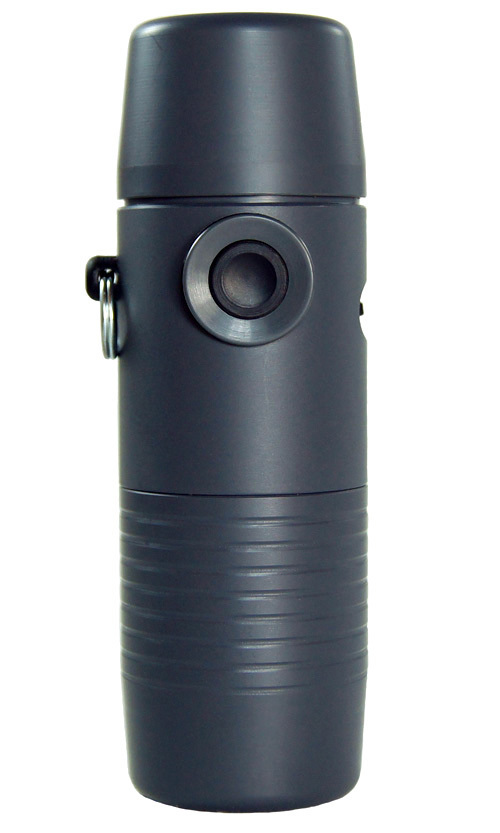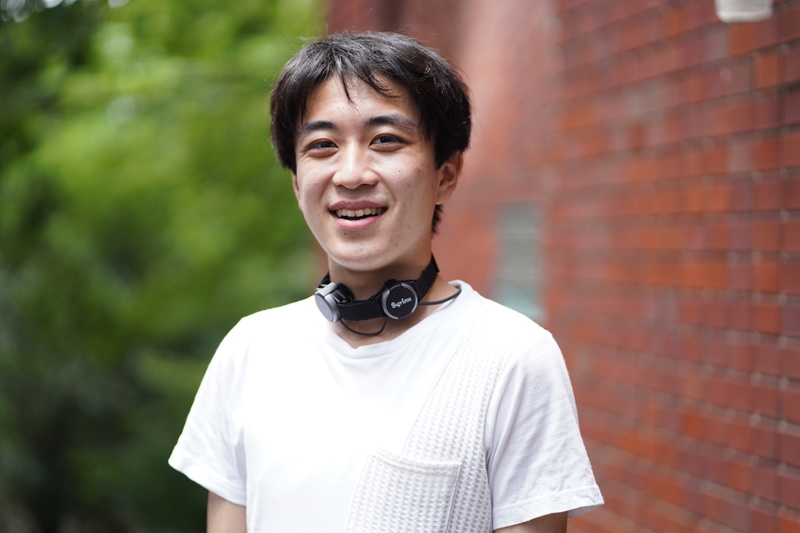Interviews

Syrinx - Bringing Back Lost Voices (Part 1)
Masaki Takeuchi
Helping those without their larynx speak once again
Interviewer & Japanese Writer: Yamamoto Takaya; Translation & Editing: Matthew Cherry
Masaki Takeuchi’s Syrinx, a wearable artificial larynx, was selected for the 2020 INNO-vation Program’s Disruptive Challenge. Syrinx is a wearable device designed for those who have lost their voice due to laryngeal and pharyngeal cancer. The device wraps around the neck and lets the wearer produce a voice by moving their lips.
While attending university, Takeuchi was involved with designing chips and processors in the Information Engineering department. He then moved on to graduate school, planning to research robotic hands in an engineering-focused postgraduate course. However, Takeuchi’s plans changed when one day he came across a single video. The video depicted a person swallowing air and belching it up to produce a voice.
“Even though well-developed synthetic voices exist throughout the world, esophageal voices also sound a little mechanical. Frankly, I wondered if there were people that could only speak in this way,” Takeuchi reflected.
Takeuchi had assisted with a voice-related workshop in the past. It was an app workshop focused on ALS (amyotrophic lateral sclerosis) patients, specifically recording their voices before they became lost so that they could still be used in the future. It was this experience that sparked Takeuchi’s desire to help those in trouble using technology. When he came across that video of the esophageal voice, he decided to reach out to a community of people who had lost their larynx due to various illnesses.
After listening to stories from the community, he found that most people shared the same sentiment: “I wish I could go back to how I was before my surgery.” Although there are several ways for someone who had their larynx removed to produce a voice, all of them result in a robotic enunciation. With an electrolarynx (EL), not only is the voice produced very mechanical, but one hand must be used to hold the device against the throat. Even when someone thinks they want to speak, it still takes time to grab the device and hold it up in the correct position, so there are many people who end up not using the device even if they have it on them.

Existing electrolarynxes provide support for those without a larynx, but they also come with many problems.
“It would be nice to have something that let people speak just by wrapping it around their neck,” Takeuchi thought. From there, he used a conventional electrolarynx as a base to start work on developing Syrinx, a hands-free wearable artificial larynx.
Artificial larynxes use the vibrations produced by internal oscillators to generate sound which is then controlled by changing the shape of the mouth and tongue. In order to make this work for the neck, it was necessary to make the internal oscillators smaller and lighter. This caused a problem, however, as the vibrations from the smaller oscillators weren’t powerful enough to produce a voice. This was solved by using two kinds of oscillators, a high and low-frequency type, at the same time.
In addition to wearability, looks are important, too. If the device feels too mechanical when put on, that alone will make the user not want to wear it. Takeuchi overcame this barrier by borrowing the power of a design engineer, leading to the device sporting a stylish design.
Even though the prototype of the device was finished, there were still plenty of problems to tackle. Takeuchi was referred by someone into the INNO-vation Program. Although he didn’t apply himself, he had known about the program for quite some time.
In part 2, we speak with Takeuchi about his time in the INNO-vation Program.

Masaki Takeuchi's Profile

